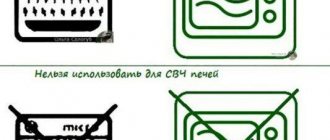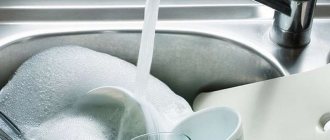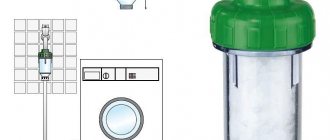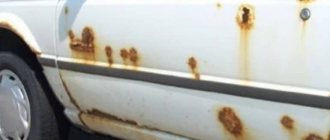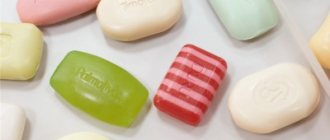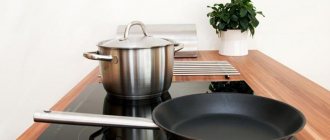In early models of microwave ovens, a sticker with a ban on boiling water was placed in a visible place. The labels on modern ovens say that this is possible by placing a small object, such as a wooden spoon, in the dish. Since each model has its own characteristics, it is impossible to create a single instruction on how to boil water in a microwave.
To the question: is it possible to boil water in a microwave oven, the answer should be - it is possible, but too dangerous. But if for some reason you have to do this, then in order to avoid burns and other troubles, you should follow safety measures.
Do not try to place tea bags in a bowl of water before boiling. They contain metal clips that can cause an electric arc with dire consequences. If someone claims that they boil it along with the bags, it means they came across a package without staples or are just lucky.
At what degree does water boil?
For example, at normal atmospheric pressure of 100 kPa (the pressure at sea level), the boiling point of water
is 100° C.
Interesting materials:
Can eyebrow shadow be used as eye shadow? Can thermal water be used to set makeup? Can ear candles be used? Is it possible to use moisture-resistant drywall in a bathhouse? Can grout be used as putty? Is it possible to smear calendula on acne? Is it possible to drip fir oil into your nose? Is it possible to ride a scooter in a store? Is it possible to brush your teeth with activated charcoal every day? Is it possible to visit the solarium every day?
Detailed instructions on how to boil water in the microwave
Step-by-step instructions for safely heating liquid:
- Pour water into a clean cup (more than half the mug, but not full), without covering it with a lid, otherwise an explosion will occur.
- Place a small wooden spoon or stick, such as a sushi stick, inside the mug. If you don't have such an item, take a cup with chips inside, this will allow gas bubbles to form freely.
- Place the container inside the stove and set the desired heating parameters. Click the "start" button.
- Periodically stop the microwave and gently stir the liquid with a spoon.
Choosing dishes
To reheat safely, you must first choose the right cookware. It can be made of glass or ceramics. It is better to take an old, chipped, scratched container; gas is released better in it.
Remember, you cannot use metal cups and plates , they lead to serious damage to the microwave and fires.
You should not take plastic dishes for heating, even if they are intended for the microwave. Plastic cannot withstand exposure to such high temperatures. It is likely that it will either melt or begin to release dangerous chemicals.
ATTENTION! Under no circumstances should you place store-bought mayonnaise or yogurt containers in the microwave; melting the plastic can lead to a short circuit and hopeless damage to the microwave.
Selecting the optimal mode and temperature
The instructions for the stove will help you choose the right mode. If it is not there, you will have to find out the time and temperature of safe heating experimentally. First, try heating the liquid for a minute and, taking precautions, assess the degree of its readiness . Usually this time is enough for heating at high power; less productive models will need up to 3 minutes.
Selection of cookware
If you make the wrong choice, you can lose both the dishes and the microwave: as happened to the housewife who boiled a dirty container. You can heat water in the microwave in dishes from:
- glass,
- ceramics,
- waxed parchment paper,
- plastic and foam, approved for use in the microwave.
Using cookware made from other materials can lead to unpleasant consequences:
- Uneven heating.
- Margarine and yogurt cups will melt and catch fire, releasing toxic substances.
- The walls of the dishes will crack.
- Metal utensils disrupt the operation of the oven, causing sparking and damage. There is a high risk of arcing and fire.
- Steam pressure can rupture a closed container, and spilled boiling water will damage the stove.
Danger of overheating
To begin with, you shouldn’t delve too deeply into the specifics of the process of heating various liquids in a conventional microwave oven. It is enough to know that the main danger is that water, when heated by this method, does not always boil in the typical way (that is, with the formation of gas bubbles), although it is heated enough for this. Having reached the boiling point, the liquid will begin to emit bubbles if, at the time of heating, you put something into the cup, for example, a spoon, a tea bag, or when it is already poured out of this cup. There are a number of rules for boiling and generally heating in the microwave. A person who has never had to deal with the complexities of such a process before should remember several important criteria:
- It is not recommended to heat the liquid for more than 2 minutes.
- Allow the container to cool for about 30 seconds before removing anything.
- It is advisable to fill more than half of the vessel with liquid.
- Pay attention to the material of the vessel in which you heat something.
- Place a wooden spoon/stick in a cup or other deep container or cover with a lid.
Trying is not torture
Of course, you can make yourself a glass of tea or coffee this way. Moreover, this will require quite a bit of time. But modern kettles boil literally in a matter of minutes. It's convenient and completely safe. You are guaranteed not to get burned, and the water temperature will be optimal for tea. Of course, it’s easy to assume that the kettle is out of order, but no one canceled the tea.
A microwave may well become a replacement for this unit. Especially if you live alone and only need to make one cup. By following all the recommendations, you will easily get a cup of boiling water and be able to brew yourself aromatic tea. Safety precautions are not empty words. In this case, ignoring the rules can result in serious injury, despite the apparent safety of the microwave oven.
What are the dangers of overheating water?
Overheating can occur at any time during heating, especially if water is poured into a new cup or a small amount of it. Water in the microwave heats up faster than steam bubbles form. Therefore, it does not boil, but continues to heat up, passing the boiling point. If you disturb it in this state, for example, tilt the cup a little, or throw a piece of sugar into it, an avalanche-like formation of steam bubbles will occur.
Accordingly, the volume of boiling water will increase sharply, and it will be explosively thrown out of the cup. A similar process occurs when opening a bottle of sparkling water if you shake it first. Contact of boiling water on the skin can cause 1st or 2nd degree burns.
The likelihood of overheating increases when using glassware, since there are no places on the inner surface for the formation of steam bubbles and thoroughly purified water, for example, previously boiled. It is better to take water for boiling from the water supply, and dishes with cracks or chips inside, which will serve as a place for steam condensation.
The influence of microwaves on the structure of water and products: laboratory study
Does it spoil food?- Putin explained why he is against mandatory vaccination
- “The registration was a success”: the Internet is discussing a sex video with a 15-year-old schoolgirl at a party
- The first interview with the “Russian Vanga” from Chita. NTV exclusive
- Without cafes, cinema and karaoke: how life in Moscow will change on non-working days
- Hurricane Ingnatz hits Europe
- To whom did actor Panin give $500 thousand before his death?
- Putin called the fight against poverty the main result of his work
- Is it possible to eat old honey?
- EU leaders blame Moscow for European gas crisis
- A Muscovite found her stolen car and was left without a license
- Aziza's friend named the killer Igor Talkov
- A lockdown will be introduced in Moscow from October 28
- Porn actress opens up in hospital room after gang rape
- The lead singer of the Lyapis Trubetskoy group beat up a spectator right on stage
Let's find out: how long does it take for water to boil?
The boiling speed directly depends on the following factors:
- the type of container it is poured into;
- the place where it boils;
- diameter of the heating source;
- heating temperature;
- quantity (the more, the longer it will take to boil);
- isolation of the container (in a container covered with a lid, the process is accelerated);
- the size of the cookware (the larger its diameter, the less time it will take to boil);
- the initial temperature of the water medium itself (already heated or warm will boil faster than cold);
- adding substances to water that reduce heat loss (vegetable oil).
the rate of boiling . If it is low, then the boiling process begins when the water reaches a temperature of less than 1000C. As the pressure increases, the boiling time increases
Reference. . The aqueous medium will not begin to boil at a temperature of 1000C. This will require a higher temperature.
How long does it take to boil in a kettle and saucepan?
In the two types of containers indicated, water boils after different times. It boils much faster in a kettle. This is especially true for an electric kettle.
It takes 3 minutes to boil a liter of water in it. A kettle on a gas stove boils in 7-10 minutes. It takes the longest time for water to start bubbling in a kettle heated on an electric stove. This takes about 10-15 minutes.
It takes varying amounts of time for water to boil . The type of stove used plays a role.
For boiling to begin in a pan heated on a gas stove, on average you need to wait 6-7 minutes.
On an electric stove, boiling begins in the pan after 8-10 minutes. On modern induction electric stoves, water in a pan boils very quickly. It takes 3-4 minutes to boil a liter.
Important . The more you pour into the kettle or pan, the longer it takes to boil.
How does time change depending on where you cook?
How quickly the liquid begins to boil depends on the place of preparation . There are different times for the start of boiling in a container placed in a microwave and water cooking over a fire. Also, different times for the start of boiling are observed when boiling on a gas and electric stove.
In the microwave
But as soon as you take out a cup of water and put any object into it, it will begin to boil violently.
To bring water to this state, just hold the glass with it in the microwave turned on at full power for 2 minutes.
On a gas and electric stove
In a container placed on gas, boiling begins faster than in a container placed on an electric stove.
When cooking with gas, the container comes into direct contact with the fire.
Moreover, the area of its contact with the pan or kettle is large if the fire on the gas stove is turned on to maximum.
The water will boil within 6 minutes. Half a liter boils in just 3 minutes 15 seconds.
When cooking on an electric stove, the time increases. This is due to the fact that the container itself does not come into contact with open fire. It is heated by a heating element through which an electric current passes.
All this increases the heating process. Half a liter will boil on the electric stove in only 5 minutes. It takes 8-10 minutes to boil a liter.
On fire
The boiling time for water over an open fire is the longest. Conditions play a role. If it is windy outside, the container will take longer to warm up. Boiling may take longer.
The container in which the water is boiled plays a role . If it has thick walls, then it will take much longer to boil in it over an open fire. The thinner the walls of the container, the faster the boiling process will begin. On average, boiling begins in 10-15 minutes over a fire.
Is it possible to speed up the process?
The following effective options exist:
- Boiling water in an electric kettle. This device will boil it 2-3 times faster than in any other vessel.
- Covering the container with a lid. It will reduce heat loss.
- Selection of cookware with a wide bottom. The water will be evenly distributed over the entire surface of the container. The area of its heating will become much larger, which will lead to the beginning of its seething.
- Place the pan on the burner with the largest diameter. Due to this, the heating area of the container will increase.
- Adding vegetable oil to water. Even a small amount of it accelerates boiling. Oil forms a film on the water surface. It prevents evaporation. At the same time, the outflow of heat becomes less.
Peculiarity. Salt does not speed up the boiling of water. Its crystals only create the illusion of boiling. This is due to salt getting into uneven and defective areas of the container, which causes bubbles to form. The salt itself only increases the boiling point.
Conclusion
The boiling time of water depends on a number of factors. The main ones are the container in which it is boiled and the place where it is prepared. It boils fastest in an electric kettle.
Also, boiling occurs faster when using an induction cooker. It takes longer to boil if the water is cooked on an electric stove. Boiling takes the longest time over an open fire. The boiling process can be accelerated by covering the container with a lid.
It is also recommended to choose a container with a wide bottom for boiling and use burners or other heating sources with a large diameter.
What else surprises experts?
Another well-known method is salt in a glass. Why do they put it in the microwave? The answer is simple.
When you work with the product, the smell always remains. They are trying to remove him. Salt helps with this. This is a lesser known method. After all, it will not help to avoid spending on a new device, but only restores the comfort of staying in the room. Any scent affects a person, and not everyone likes it. The smell of food can be intrusive, but it is easy to get rid of it in accessible ways that are very simple to implement.
There is no need to ventilate or clean the structure with special means. The smell from the food will be absorbed into the salt. 2 hours is enough, but most often the glass is left overnight. All odors will disappear into salt crystals, and not a trace will remain of them.
A microwave oven is a useful product. Many have already forgotten that they once heated on a stove, which requires more care. Undoubtedly, purchasing it would be more troublesome, but a microwave oven is always present in any home, and it needs to be looked after. For this purpose, they resort to simple tips that you can use too.
What is the temperature in the microwave oven?
Typically, buyers choose models designed for 800-1000 W. They heat food up to 100 degrees in just 1 minute. It will take half a minute to heat up to 50 degrees. Maximum temperature
inside the chamber, or rather, the dishes in it, does not exceed 100-110 degrees.
Interesting materials:
What is better for shaving: a trimmer or an electric razor? What is better gel polish or gel paint? What is better to use conditioner or hair mask? What is better: a short piston stroke or a long one? Which is better for a street fight? What is better: childbirth or caesarean section? Is it better to drink or drink alcohol? What should you take with you to a housewarming party? What does it take to be a camp counselor? What do you need to become a sales manager?
Precautionary measures
- When heating water in the microwave, do not forget to put some dielectric object into it.
- Do not use closed containers to avoid explosion.
- Do not bring boiling water close to your face. An unexpected release of boiling water can lead not only to burns, but also to loss of vision, as happened to a young man who was heating water to drink a cup of hot coffee.
- Wait 0.5 minutes before removing dishes from the chamber. If nothing happens, stir the water with a long stick. If the object overheats, bubbles will condense, and the water will overflow due to the increase in volume. If there is no overflow, then you can safely take out the cup.
- When boiling for the first time, do not set the timer for more than a minute. The length of time it takes for water to boil depends on the amount of water and the power of the stove. Therefore, by the degree of heating of water per minute, you can determine the required time to boil a certain volume. Powerful ovens need 1 minute to bring to a boil; weak ovens will require 3 minutes.
- When using dishes that have the ability to retain heat, in particular ceramic ones, you need to remove them using a potholder or towel.
- Do not try to heat vodka in the microwave, for example for a compress, or other alcohol-containing liquids. Alcohol evaporates quickly even at room temperature, so at best, all that will remain in the oven is steam with the smell of fusel. In the worst case scenario, the vapor will ignite if there is a source of high temperature nearby.
To boil water without any trouble, use a thermometer with an appropriate scale inserted into the container. When the temperature reaches 100°C, the oven must be turned off.
The microwave is, of course, convenient when you need to quickly boil a small amount of water. However, you should not abuse the oven for this purpose, since after clinical trials it turned out that the structure of water changes under the influence of microwave radiation. That is, the body receives low-quality water, which can disrupt metabolism.
